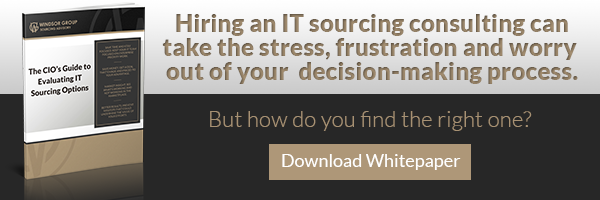
None of us can solve for the ever-changing challenges of IT alone, there are far too many complexities and intricacies that require the specialization and expertise of various organizations, departments, and teams. With that said, establishing transparent and productive partnerships with vendors and peers serves a greater purpose than having a cordial work environment. It creates a platform from which enterprises can leverage the knowledge, resources, and connections of strategic partners to add value, both internally and externally, as well as to enhance strategy and project execution capabilities. However, investing in the wrong partnerships can be detrimental to an organization’s ability to effectively meet business and market demands.
The Risks of Investing in the Wrong Partnerships
Today’s IT landscape leaves little room for error, and failure to execute on strategic partnerships represents a potential failure to execute on business initiatives. As modern enterprises continue to seek out the vendor relationships that will enable quicker, more effective digital and agile transformation efforts, it becomes increasingly important for executives to be aware of the professional and financial risks associated with investing in the wrong partnerships. If strategic objectives are not cohesively aligned, enterprises may find themselves challenged with conflicts of interest, a scarcity of resources, implementation challenges, a slower time-to-market, and an inability to meet demands.
It’s becoming clearer that establishing new partner relationships is not a quick, low-cost, or risk-free solution for combatting today’s IT challenges. Cultivating strong, mutually beneficial partnerships requires both parties to invest a substantial amount of time, energy, and resources in order to drive successful results. For organizations in pursuit of new vendor relationships, taking the necessary time to consider opportunity costs and to establish clear expectations as to what the ideal outcome looks like is absolutely critical.
The Impact of Investing in the Right Partnerships
While the effects of investing in the wrong vendor relationship can be cause for significant operational hindrances and limitations, the benefits of investing the right strategic partnership can do just the opposite. In most cases, enterprises that choose to pursue various partnerships are doing so because they cannot achieve their desired goals with the current systems, tools, and resources they have in-place; and to no surprise, this has become the reality for the majority businesses competing in today’s digital marketplace. When properly aligned, vendor partnerships can offer three major benefits to modern enterprises; access, efficiency, and effectiveness.
- Access
Arguably the largest advantage of a successful partnership is the access that can be gained. When vendor relationships are structured in a way that gives way to increased market access, both parties are able to increase their chances of acquiring new customers, identifying and pursuing new revenue streams, and leveraging additional resources. Not only does this enable enterprises to positively impact their bottom line, but it also helps to establish greater levels of credibility and reliability in the eyes of customers.
- Efficiency
The impact of digital transformation has been so significant that it is no longer a viable option for an enterprise to maintain the majority of its resources in-house. While outsourcing key infrastructure components may seem to limit access to necessary systems and resources, the reality is that pooling resources with the right strategic partner can help to create additional efficiencies and optimization within an organization’s infrastructure.
- Effectiveness
As our world continues to become more connected, modern enterprises must adopt the agile practices and capabilities that will allow them to compete in today’s digital landscape. Meaning, generalist roles will no longer be sufficient for supporting business needs and demands. Through vendor partnerships, organizations are able to stay more focused on their core competencies while allowing outsourced experts to bear the responsibility of managing the areas in which they specialize; ultimately increasing systematic and operational effectiveness.
As the impact of digital disruption on traditional business practices continues to increase, IT sourcing advisors, like Windsor Group, have become highly sought-after. The reason for this is that IT sourcing advisors possess the industry knowledge and strategic connections necessary to address the challenges faced by the majority of modern enterprises. In most cases, IT sourcing advisors will perform an analysis of an organization’s existing systems, processes, and expenses in an effort to identify areas where efficiencies and optimizations can be gained. From there, they will consult on various IT service options and help evaluate and select the strategic partners that will add the most value and drive the greatest results for a given organization.
Choosing the right IT sourcing advisor is critical to ensuring proper alignment between businesses and their chosen IT service provider. To gain further insight into the steps that must be taken to effectively evaluate IT sourcing options, download Windsor Group’s whitepaper “The CIO’s Guide to Evaluating IT sourcing Options”.


